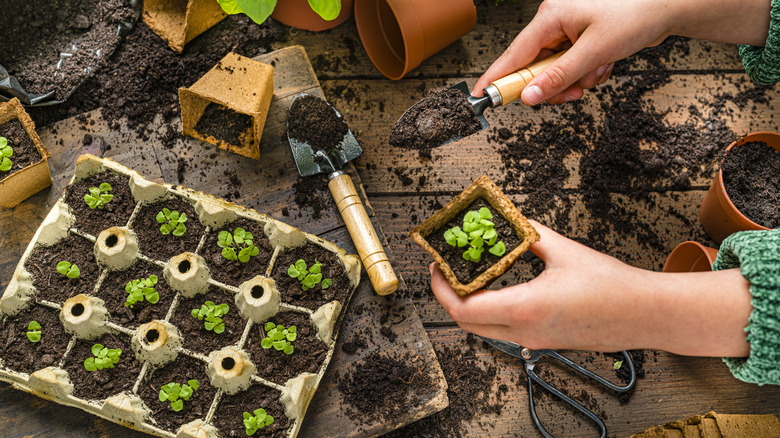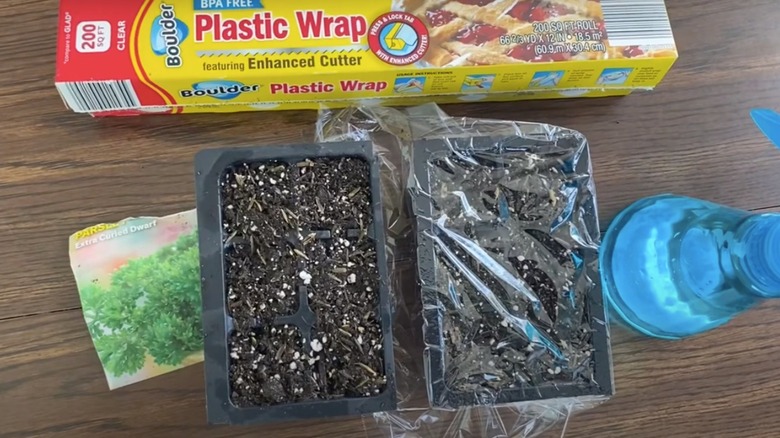Do I Need To Cover My Seedlings After Planting?
Whether you're a novice gardener or have a green thumb, starting your seedlings indoors boasts countless benefits. This is also a necessity during cold winter months. Not all seeds, however, must be started indoors, so check the package before planting. But if you find that the seeds you wish to grow require an indoor start, you're probably wondering if you should cover them after planting. The answer is yes, it's recommended to cover your seeds to help them germinate. But you only need plastic wrap, an item you probably have in your home already.
A cover works to keep the soil moist, helping your seeds sprout. In general, the first one to two days are when you need to focus your initial attention, helping your seeds to properly germinate. But what seeds do the best with a plastic cover? Slow-germinating seeds benefit the most from being covered. The same is true for smaller seeds closer to the surface. Since these seeds tend to lose moisture faster than those planted deeper into the soil, a protective layer of plastic works to keep them moist until they sprout.
Cover your seedlings
It doesn't matter what type of container you use. Some people even opt to create seedling pots using newspaper or toilet paper rolls, reusing items they already own. However, seedling trays come with the right amount of drainage and are perfect for replanting. No matter what you use, just be sure your container is several inches deep for your planting project. It may be tempting to grab some soil from outdoors, but you should always start with new soil. This ensures your seedlings germinate in a disease-free environment.
The depth of your seeds depends on the type of seeds you plant. Lettuce and arugula, for example, are placed right on the surface of your pot. Larger seeds are pushed further into the soil. You should also drop two seeds in case one fails to sprout. After you plant your seeds, use a mister to water them gently and cover them with plastic wrap. You only need to cover them until you see tiny green sprouts. At this point, remove the plastic cover. You should also keep your seeds in a warm place away from drafts and in an area with plenty of sunlight. Once your seeds are ready to be planted outdoors, transfer them. You can even reuse your plastic wrap whenever you're interested in starting seeds indoors.

